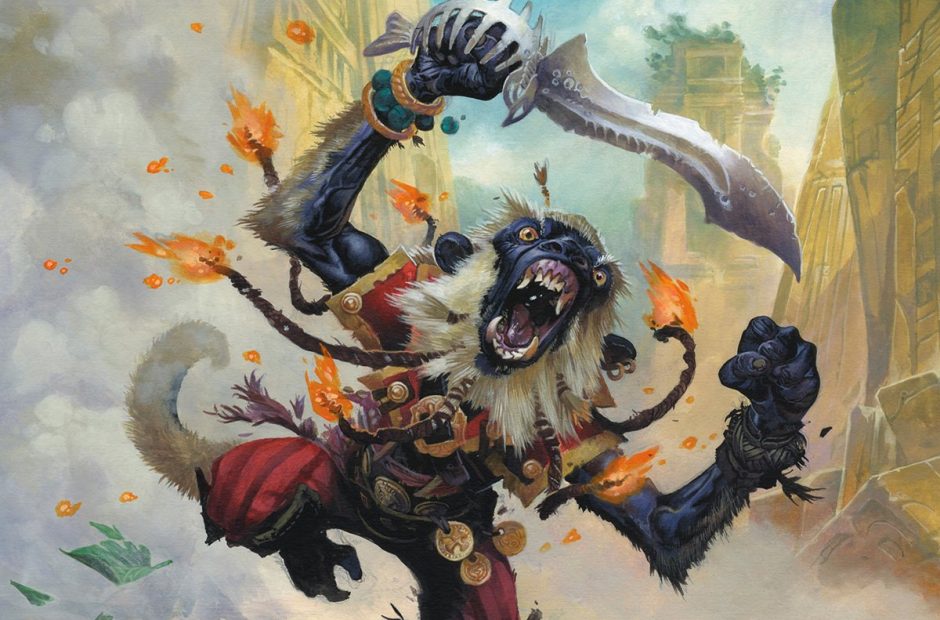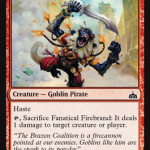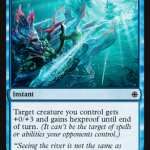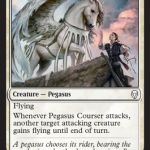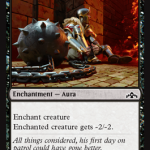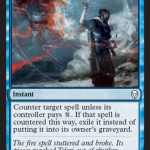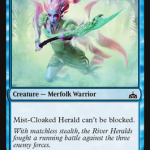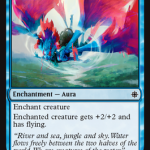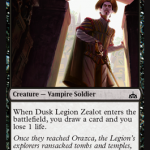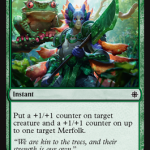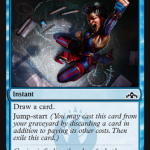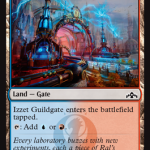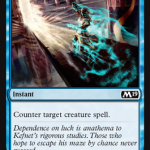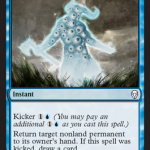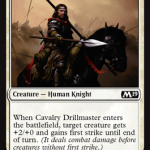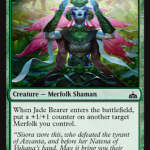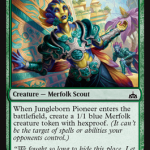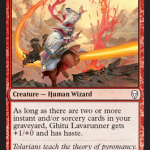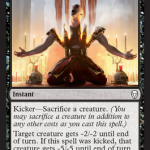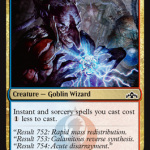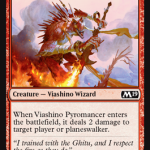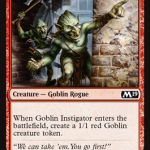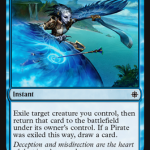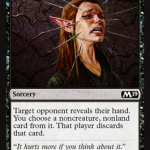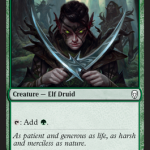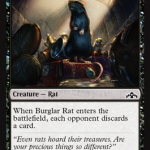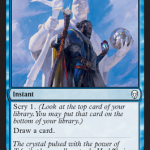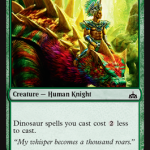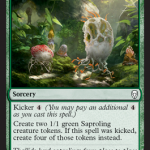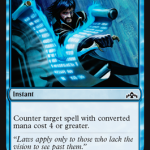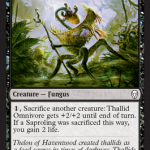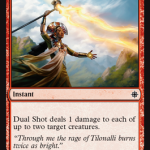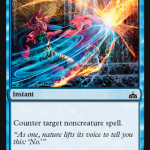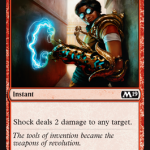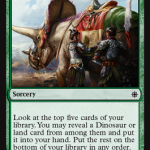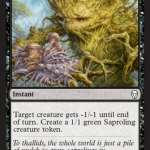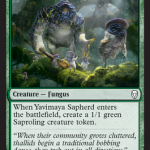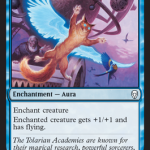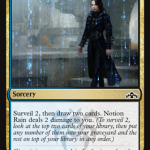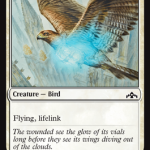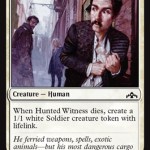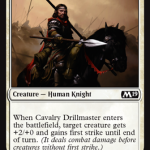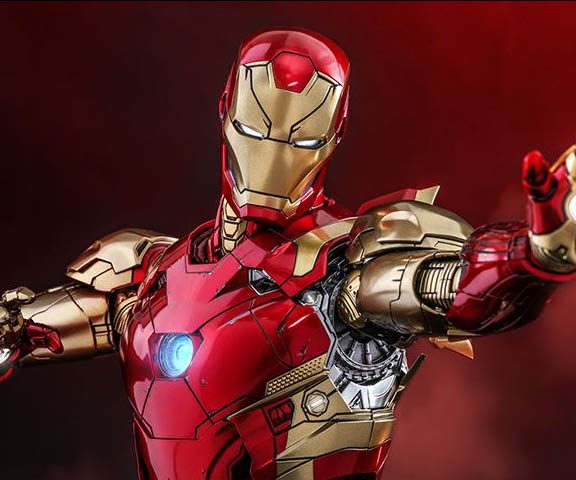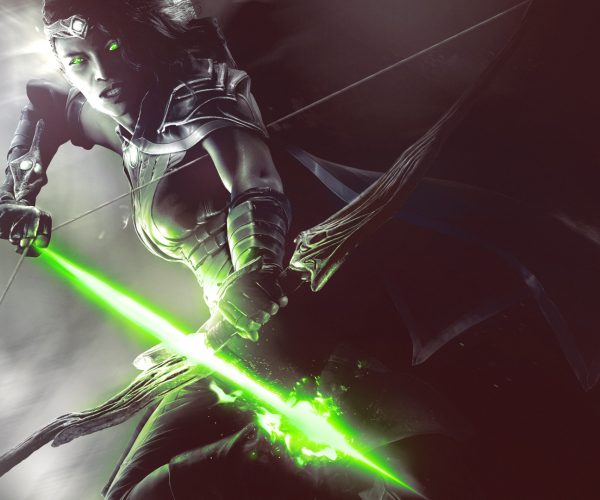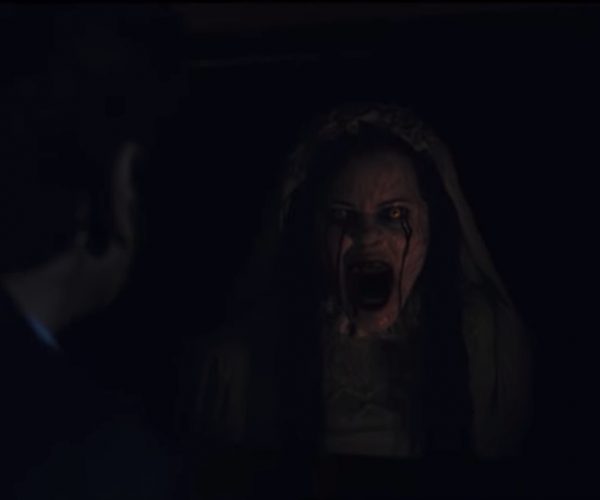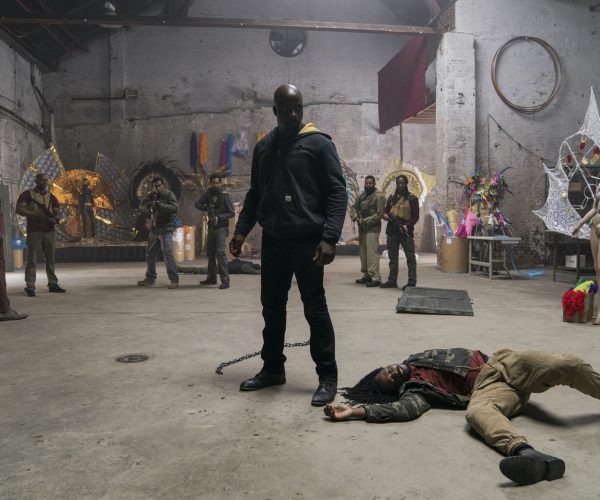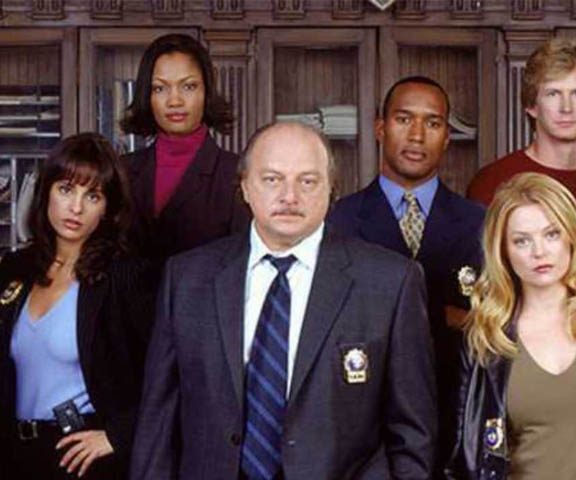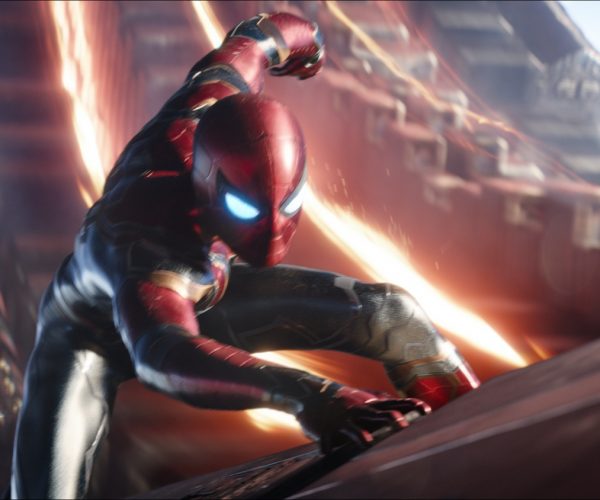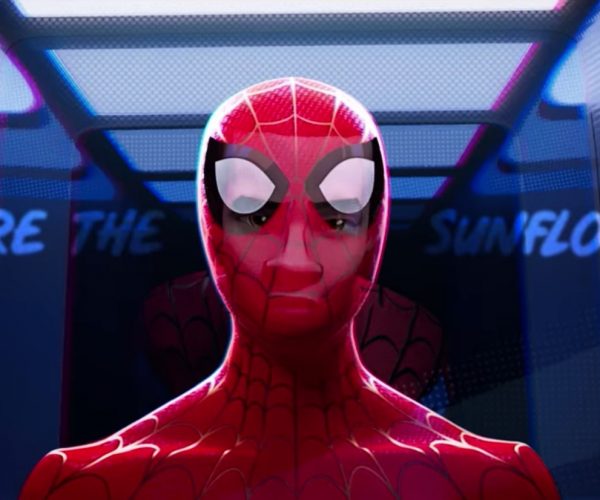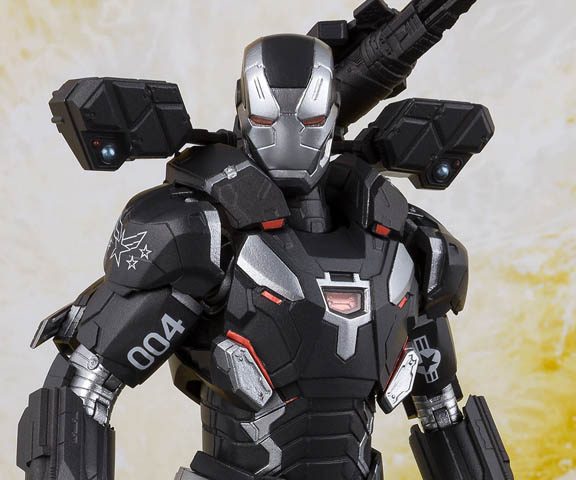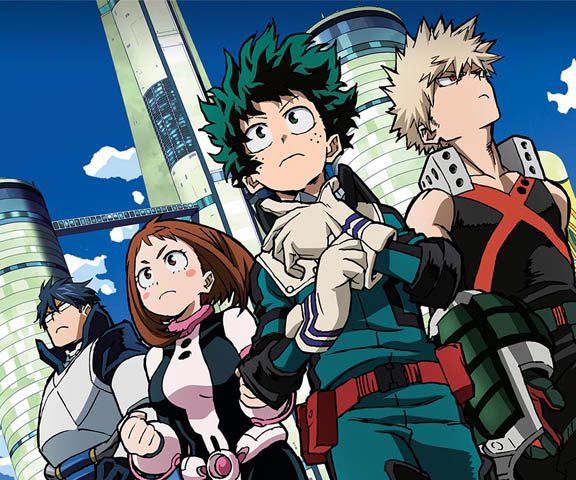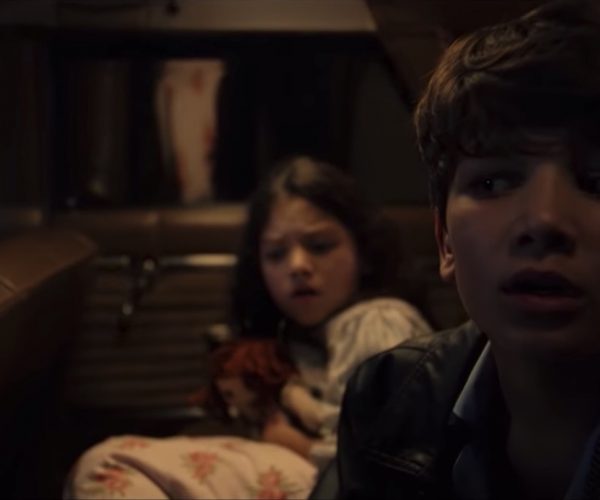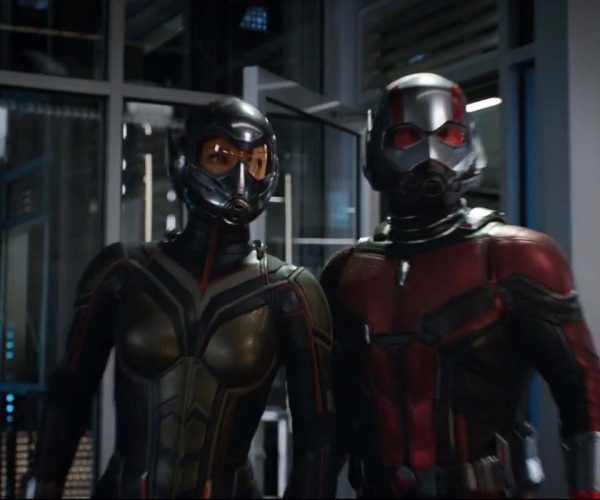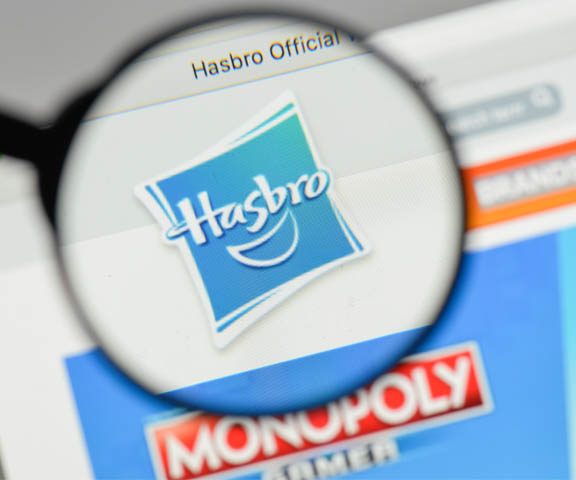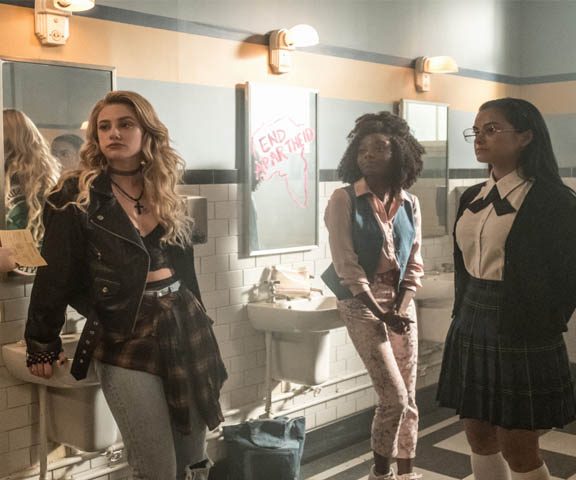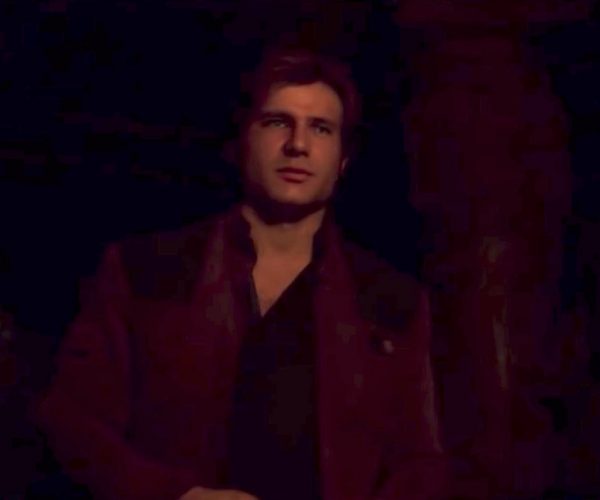Feeling good about your latest Magic: The Gathering deck? Sink a lot of money into that flawless masterpiece of strategy and consistency? Good for you! I didn’t! I sunk all of my free Magic Arena wild cards resources into a Boros Mentor deck, just to find out that the mechanic isn’t all that great in constructed. It’s a ton of fun when it comes together, and it works brilliantly when your perfect curve caps on turn-4 with Aurelia, Exemplar of Justice or Heroic Reinforcements.
But if you miss that curve, there is no coming back. Your opponent will overrun your creatures, knock you off pace, and as the game goes on longer, you will lose.
Ugh, at least I tried, but I can’t give up on it! I already sunk too many resources into it. Thank goodness I only sunk Magic Arena cards into the deck and not real money.
If I were to start over on a new deck, I would have to go about it like all deck brewers do. Choose a couple of powerful rares, settle on some synergies and strategies, and flesh out those strategies with uncommons and a lot of commons.
Luckily, we live in an age where commons are powerful. This is not the olden days of Fallen Empires or Homelands when commons were absolute trash. In modern Magic and especially in the current Standard cycle, there are plenty of commons that might be even more suited for your deck than the most expensive mythic rares out there.
With a playset of these cards, you should have the foundation to build a viable deck.
White
White struggles the most at common. There is no getting around that. You either go big or go home with White. I am reaching since I feel the need to represent all of the colors, but in truth, there are better options out there for Standard than these cards.
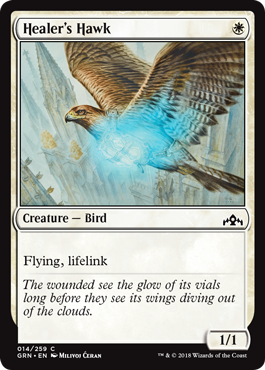
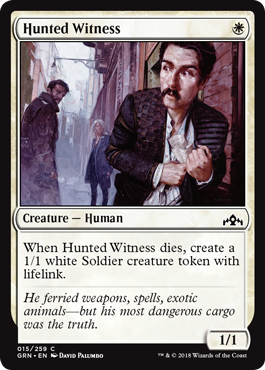
White Weenies is always a thing in Magic. Load the board with threats, and jam in for damage. In this strategy, you are best suited using an army of 2/1 creatures like Dauntless Bodyguard or Skymarcher Aspirant to hit early and capitalize late.
In the current Standard, Guilds of Ravnica has the two best common creatures to fit this mold… even if they barely pass the test. Healer’s Hawk is an evasive one-drop, and while it doesn’t do two damage, it does create two-point life swings each time it hits. Hunted Witness is another early creature that gets in early, and once it dies, it is replaced by an even (slightly) better creature. Opponent’s won’t be quick to block it knowing that something worse is behind it, allowing it to get in early for a few more damage.
Stretching, I know, but I need to write about something White.
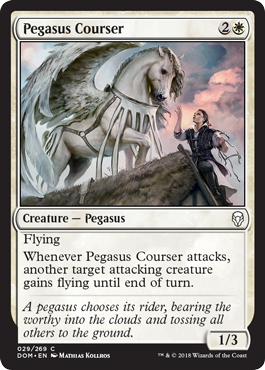
More stretching, but I do love this card.
Courser Pegasus is a little too powerful at common, so powerful in fact that Wizards of the Coast made it uncommon in Guilds of Ravnica! Giving another heavy hitter flying allows for easy damage, and Pegasus Courser also is a perfect target for Mentor. It blocks very well the turn it comes into play, and it also eats up a Lightning Strike or a Wizard’s Lightning, keeping your bigger threats safe for yet another day.
Might not seem like much since the best creatures this card wants to target also have trample, but if it survives with a Tajic, Legion’s Edge or Gigantosaurus on the battlefield… whew.
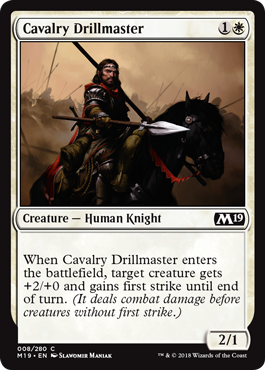
Unlike the other cards, this one is actually seeing minimal Standard play in the White Weenies deck. Turning a one-drop like Dauntless Bodyguard or Skymarcher Aspirant into a 4/1 first strike on turn-2 is a power play in White Weenies, and this is exactly what this card delivers. Opponents will want to block that four damage, knowing that more pressure is coming, and the result is your one-drop creature takes down something BIG.
This move works on turn-2 just as well as it works on turn-5. Solid card for the right deck.
Blue
We go from the worst color at common to the indisputable best. Blue always has a healthy dose of card draw spells and counterspells that appear at common, and that is true to this day. Don’t expect any bomb creatures here, just the support cards that help blue do its thing.
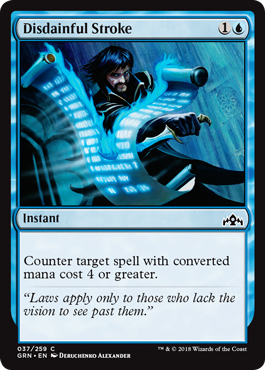
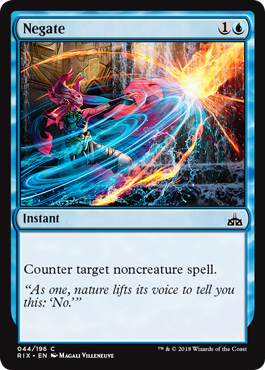
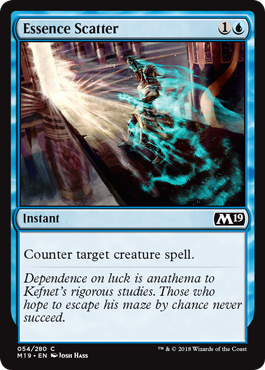
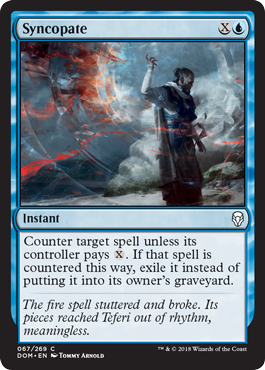
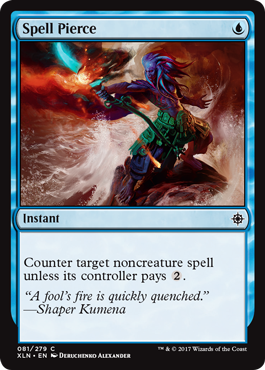
Counterspells until the end of days! Each of these has a place in Standard, whether it is in the main deck or your sideboard, you’re going to want some counterspells if you’re playing Blue
Right now, while aggressive decks dominate early cycles and low costed creatures run free, Essence Scatter and Syncopate perform the best. Essence Scatter just straight up blows creatures away, and early in the game, when players are using all of their lands every turn, Syncopate easily throws players off tempo when they have nothing left to tap.
Spell Pierce also works well when your aggressive deck wants to get in for damage early and defend your creatures against Red and Black removal.
Later in the game, once big spells start coming down Disdainful Stroke cuts will save your skin. Negate should always be in a sideboard as well, as it tosses aside removal spells with ease, and as the format evolves and control decks start to take over aggressive decks, you’ll want some Negates to cancel any non-creature bombs later in the game.
Plenty of options here, so many that you might not even need rares to get the job done.
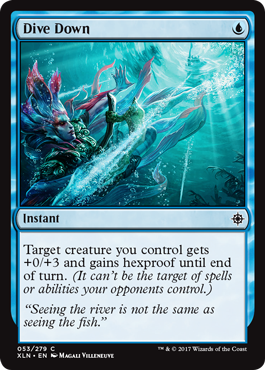
Dive Down also sees play here and there, especially in the Blue Obsession deck, a favorite of mine. It doesn’t quite generate the same usefulness for Blue as Blossoming Defense did for Green decks in the last Standard cycle, but hexproof allows this card to double as an effective one-drop counterspell against removal.
In other cases, it can save your creature in combat. Versatility saves the day, but you’re only going to play this in aggressive Blue decks.
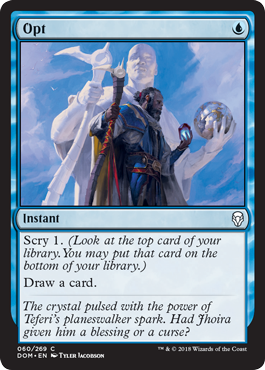
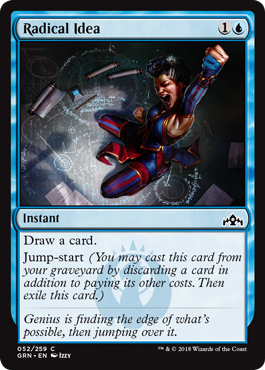
Card draw is Blue’s other specialty, and these are the two that you want in your decks. Opt delivers a lot for one mana, aiding in you drawing the cards you’ll actually want to see. Never underestimate the power of card advantage for a single mana.
Radical Idea is a little expensive for two mana, but jump-start puts this card over the top in the right decks. When combined with Guttersnipe, Goblin Electromancer, and Thousand-Year Storm, this card chains into itself and just goes off like you wouldn’t believe. Almost like a REAL storm deck in Standard… it’s insane.
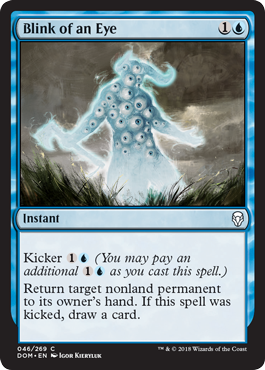
Bouncing a creature is another tactic of Blue since it can’t straight up blow up creatures like Red or Black can. We lost Unsummon in the previous Standard rotation, but Blink of an Eye fills in nicely. For an extra mana, you can bounce dangerous artifacts or enchantments that Unsummon would miss, and its kicker ability makes it strictly better than Disperse.
Bouncing anything for two mana is a strong move in a tempo game, bouncing anything and drawing a card for four mana is a strong move in any game! This sees play in most aggressive Blue decks or Blue/Red Spells decks.
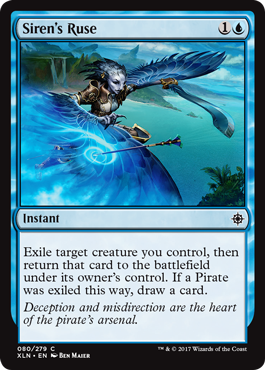
Pirates sadly never fleshed out in Standard, which is a shame because I believed in the Blue/Red deck a lot. Funny because I also believe in Boros Mentor… which also isn’t fleshing out.
Still, Siren’s Ruse is a solid addition to any deck looking to capitalize on “enter the battlefield” effects. I’m not sure if any Blue decks are doing that at the moment, but if Wizard’s creature a Blue bomb with an “enter the battlefield” text… you can bet this card will be in the card list. You don’t have to cast this on a Pirate to fully capitalize on it.
Otherwise, it’s also just another counterspell that protects your non-token creatures from removal.
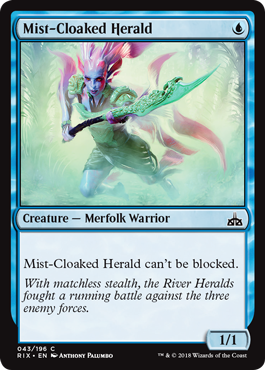
Ugh, still going on with Blue! Stop it, Wizards! We get it, you love Blue!
This unblockable creature is an all-star in the Blue Obsession deck, creature free card draw since it can never be blocked and has enough counterspells to protect it from removal. Deadly combination all the way around.
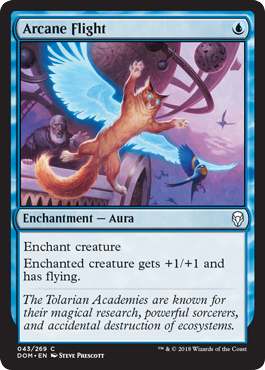
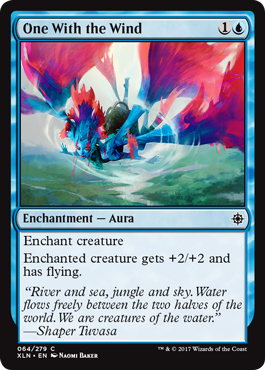
And while Curious Obsession might be the best Aura in Blue at the moment, there is definitely an Aura deck out there that wants these two cards. They provide an exceptional amount of power for their price, and with a similar counterspell package backing them up, these cards excel when attached to Champion of the Flame or Valduk, Keeper of the Flame.
This Izzet Auras was a fun deck, but the loss of Cartouche of Knowledge, Cartouche of Zeal, and Consuming Fervor hurt it pretty badly.
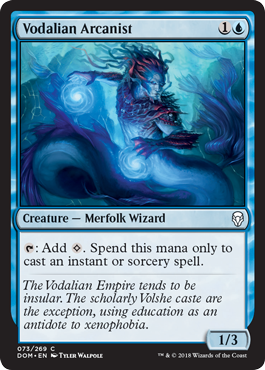
Ugh, one last card for Blue before we move on. This card doubles in usefulness as a Wizard AND a Merfolk. It’s somewhat useless in the Merfolk deck with plenty of better options, but in a dedicated Wizards deck, it provides quick ramp into your best spells and a Wizard on the battlefield for Wizard’s Lightning and Wizard’s Retort.
And there you have it… Blue. We salute you, now go away.
Black
Black is decent at common with some strong options at its main tactic: REMOVAL. Most of the Removal spells you’ll want to use in your average deck are uncommon or rare, but a few decks out there might prefer some of the common removal.
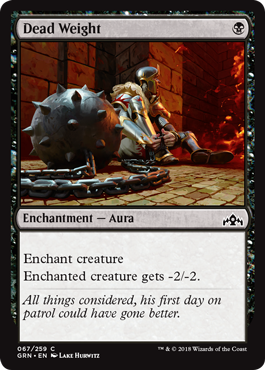
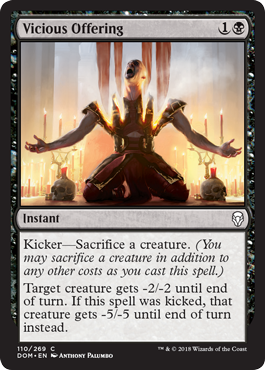
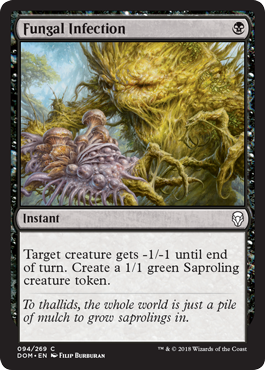
Dead Weight is just, straight up, awesome. The last time Black/Green decks dominated Magic was back in Shadows Over Innistrad with that sick delerium mechanic. So much fun! While Dead Weight played right into Delerium’s mechanic by getting an easy enchantment into the graveyard, it does not work so much in the Golgari Black/Green deck that’s currently running circles around the rest of the color combinations.
Still, it’s very appearance at the same time that Golgari once again takes over Magic can’t be coincidence. This card deserves respect and possibly a sideboard spot against aggressive decks. It kills weaker creatures and permanently weakens bigger ones.
Vicious Offering is better at killing weaker creatures since it can be cast at instant speed, but it is weaker against powerful creatures since the effect only lasts until the end of turn. To get the most out of Vicious Offering, you’ll want the -5/-5 effect, meaning you play this in the Saprolings deck, where you have tons of disposable creatures. Trading a Saproling and this two-mana instant for Lyra, Dawnbringer is just straight up mean!
Fungal Infection is also decent in the Saproling deck, killing early creatures and giving you a Saproling in return. When necessary, it deals that last extra point of damage to a powerful blocker, or it helps your creatures survive combat… never failing to create value with that token.
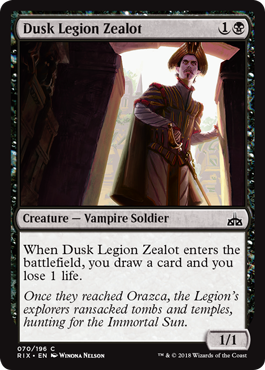
If Black ever needs a two-drop creature to fill in the curve, this is a viable option. It’s better in a Vampire deck, no doubt, but I’d rather play Seeker’s Squire at uncommon in a normal deck. The choice is still there though for those who want to get their threats faster.
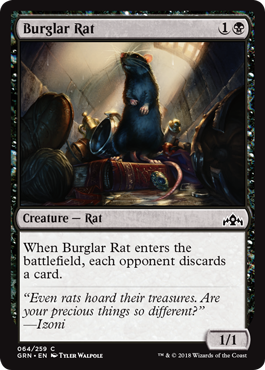
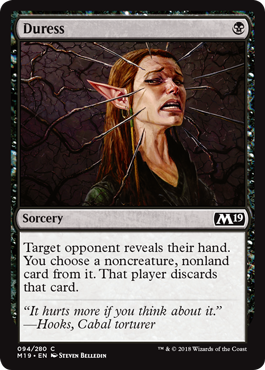
Black is also the best color at ripping apart your opponent’s hand. In control decks that rely heavily on non-creature spells, Duress is the absolute best card to use against them. It’s a sideboard staple whenever it pops up in Standard, and there should be a playset in every sideboard.
Burglar Rat is also a decent option as a two-drop when you are looking to cripple an opponent’s early plays. Just DON’T play it against Mono-Green Steel Leaf Stompy since you never know when they have Nullhide Ferox in their hand.
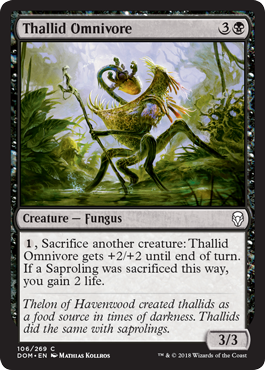
In a sacrifice heavy deck, this is always an option. Free sacrificing is not a thing in the current Standard format since Yahenni,Undying Partisan is no longer with us and Nantuko Husk didn’t appear in Magic 2019.
So, instead, we get this, which only costs a single mana. You’ll want this in a Saprolings deck since that life gain piles up, but in any other sacrifice deck, Ravenous Harpy will probably be a better threat. In tandem, both are a threat on the board with a host of fodder to feed to them.
Red
Red’s direct damage is usually best served at uncommon, where Lightning Strike, Wizard’s Lightning, and Lava Coil currently reside. However, there are options at Red for direct damage and creatures that perform exactly how Red wants to… in your face!
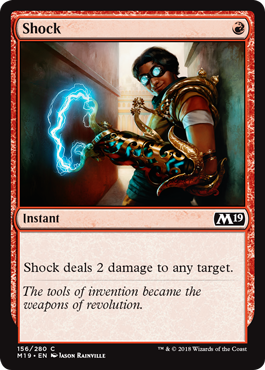
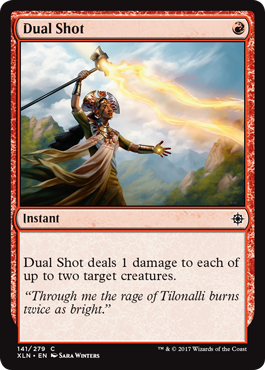
Shock never loses its value. Always play it. It can kill wimps, finish off brutes, and close the game if need be. Always an option in Standard, no matter the strategy.
Dual Shot is a bit more niche. It can out two wimps for a single mana, which is nice. However, I’ve seen it put to far better use in Dinosaur decks where my opponent devastated my Saprolings while triggering its Ripjaw Raptor twice a turn… ugh, that was a beating. If you are using Enrage, you’ll want this.
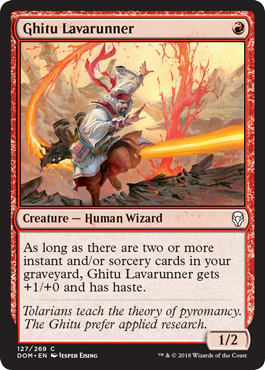
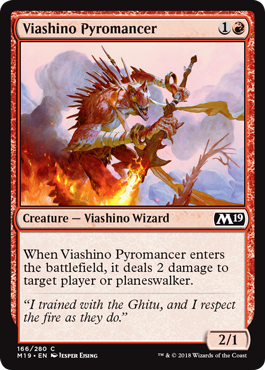
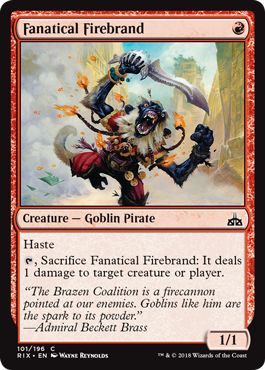
Red wants to jam early, and these three are the best you’ll find at the moment. Ghitu Lavarunner hits early as a 2/2… usually on turn two if you cast a one-drop spell on turn-1 and turn-2. Viashino Pyomancer was an unimpressive dork in Limited Magic, but since we live in an age where Red is allowed to crush Magic until the end of days, where does it go wrong? It’s cheap, has aggressive stats, and it does immediate damage to put pressure on the opponent.
Oh yeah, it’s also a Wizard, meaning easy access to Wizard’s Lightning… great. Go away, Mono-Red!
Lastly, we have Fanatical Firebrand which does a lot for a single mana. It can attack on turn-1, a huge plus for it. Later, it can ping an enemy creature, delivering that last point of damage after combat to kill it off. It’s also a Goblin, which is relevant in the current Standard format given all the support.
In fact…
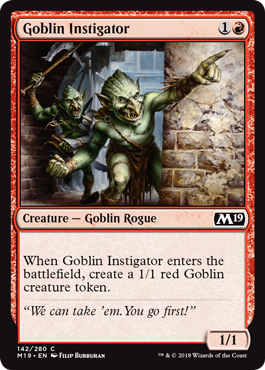
Goblin Instigator provides all the fodder you need for a Goblins deck. Play them early, use them as chump blockers, clog up the board. Later, you can sacrifice them for Goblin spells like Siege-Gang Commander, make them legitimate threats with Goblin Trashmaster or Goblin Warchief, or turn them into mana with…
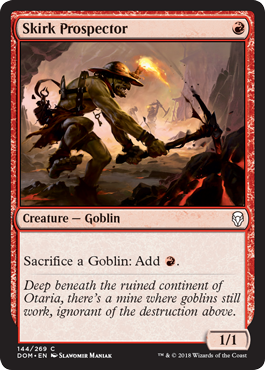
Nothing like ramp in a red deck. This will easily let you get to your bigger threats if you have enough Goblin fodder on the board.
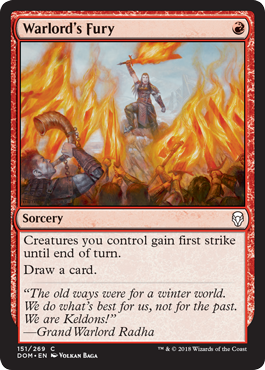
I haven’t seen much use of this yet, but traditionally, any cheap spell that lets you affect all of your creatures and replaces itself with a card is good. I see this as a sideboard card in a Wizards deck, where it wrecks mirror matches.
Green
Green’s best bruisers are rare or mythic. No getting around that. Support is thin at common, but these cards will help you get there, no question.
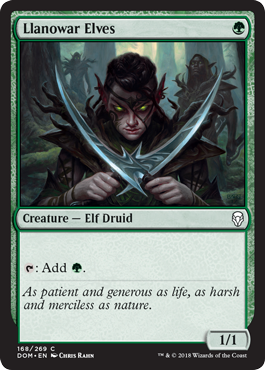
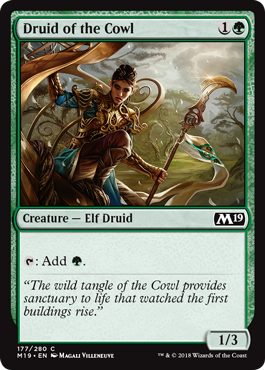
Green’s strength lies in big bruisers, so we need our common creatures to help us get there quicker. Llanowar Elves is an all-time great Magic card that rarely fails to deliver. Stupid Goblin Chainwhirler had to dampen its highly anticipated return to Magic, but the number of threats Green has right now makes it impossible to not run a playset.
Druid of the Cowl is also decent. Llanowar Elves is worlds better since turn-1 ramp can be a killer, but that extra mana for a bit more resiliency does help against certain decks.
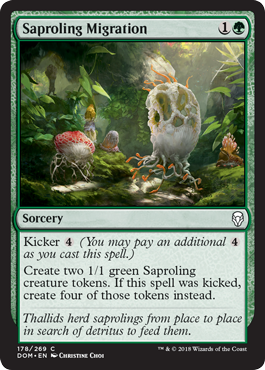
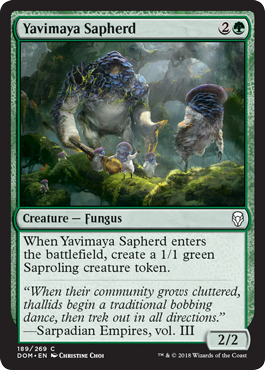
Saproling Migration is good enough for any “go wide” deck you want to play. It stalls the board early to hold back aggressive attackers, and later in the game, it delivers even more bodies to do whatever you want with. Great early and late, never a bad draw.
Yavimaya Sapherd is a bit less versatile, but Green’s “three-mana for 3/3 across two bodies” cards are usually good. Scion Summoner was better since that Eldrazi token had value beyond being a relevant creature type, but in this Standard format, you can find some use for that Saproling. This is better reserved for that deck, so don’t play it as freely as you would Saproling Migration.
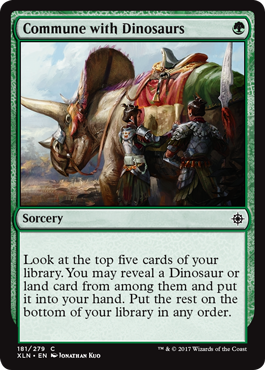
Excellent card! Use this to thin out your Dinosaur decks and find either the threats you need to win the game or the land you need to cast them. In a Dinosaur deck, run four. No question.
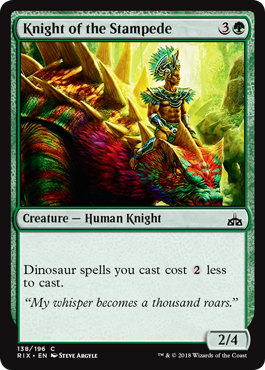
Run less of these, but they are still a big help in holding down the fort until your big Dinosaur threats arrive.
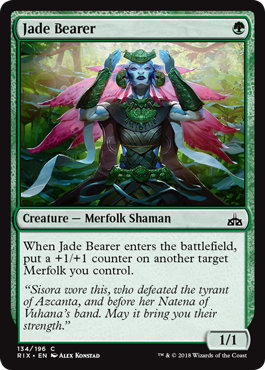
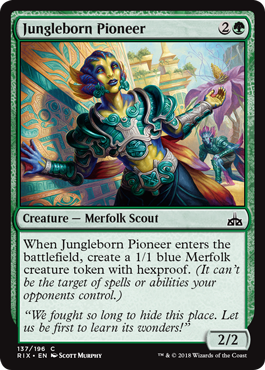
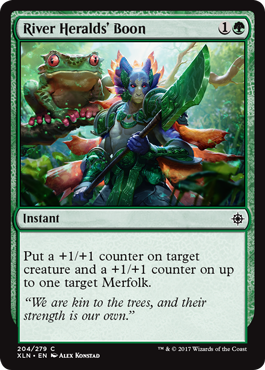
Yup, Merfolk is still a powerful deck when it works properly These three provide all the ammunition you need for synergies and triggers. Jungleborn Pioneer is the best here, and, like Yavimaya Sapherd, delivers that 3/3 across two bodies, only its hexproof token is far more useful than the Saproling token.
The likes of Jade Bearer, River Herald’s Boon, and Deeproot Elite help it become a 4/4, 5/5, or 6/6 threat that you can’t target for removal. So cheap!
Ugh, Merfolk… love them and hate them so much.
Multicolor
Usually, multicolor cards are uncommon in most sets, but Guilds of Ravnica‘s focus on multicolor player paves the way has a few powerful options at common.
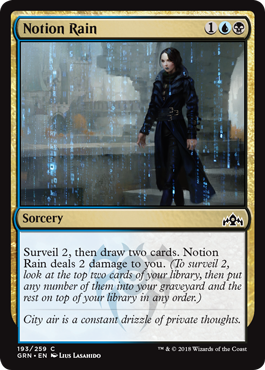
Notion Rain is boss in Blue/Black control decks. It does everything you want, gets you everything you need, and has a low price to do so. Blue/Black isn’t in style at the moment, but if it gets there… you’ll find these in the main deck, no doubt.
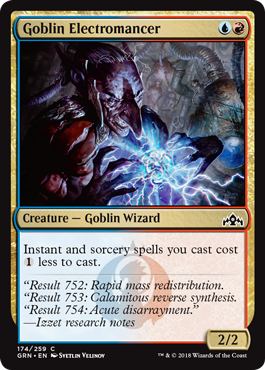
A must for Izzet decks. It’s a Wizard that allows for deck synergies. It makes your instant and sorcery spells cheaper, leading to cheap removal and counters, and it opens the door for Storm-like combos with the new jump-start mechanic. I’ve been at the receiving end of this an Radical Idea teamed up with two Guttersnipes… it wasn’t pretty.
At it’s base, it’s a 2/2 for two… can’t argue with that.
This isn’t a new card, so it has powered Blue/Red decks in the past. It will continue to do so for the next few years.
Colorless
The loss of Kaladesh block from Standard took a ton of useful common artifacts with it, and none have really stepped up to replace it yet. However, I can find a land that you might want to run.
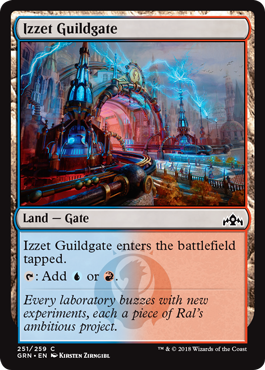
Izzet Guildgate is the only Guildgate you should consider running in a Constructed deck as you’ll need all the help you can get to cast Niv-Mizzet, Parun. The inconsistent mana will be worth it if it helps this guy hit the board. Otherwise, don’t bother. Four shock lands and four check lands should work in most other Blue/Red focused decks.
